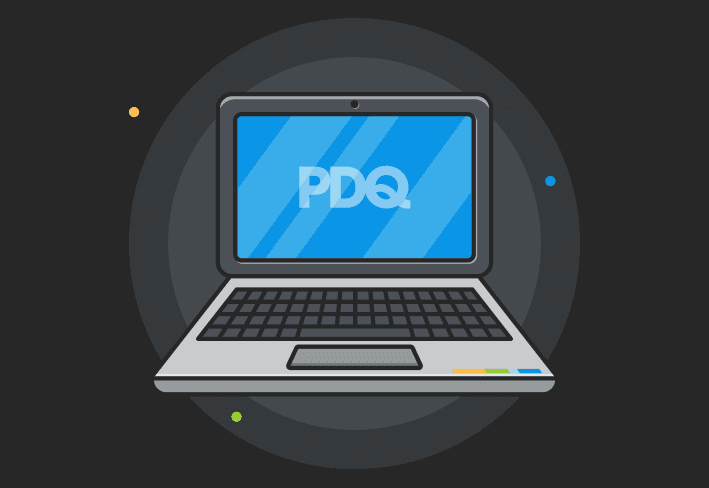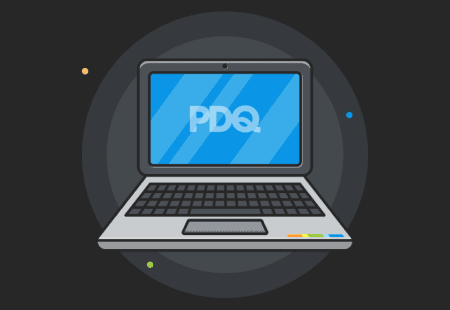Your company’s values, culture, ethics, and goals drive your business forward. Shared policies and procedures are what keep you on track towards those ideals. But let’s face facts: Getting best practices down on paper isn’t what motivates you to get out of bed in the morning. Nonetheless, documenting information technology rules is essential to protecting your business and optimizing your efficiency.
A well-crafted IT policy is a valuable information resource to reduce errors, empower employees, and standardize procedures across your organization. Not only that, but an appropriate company policy can also help ensure you meet industry compliance standards, thereby dodging costly regulatory fines and/or embarrassing cybersecurity incidents.
If you’ve never written an information technology policy before, the process can seem as intimidating as climbing Mount Everest in a blizzard. But never fear! We’ll be your guides (and watch your back for irate office yetis).
7 stages of IT policy development
Unfortunately, you can’t just scribble an effective IT policy on a cocktail napkin during your next networking happy hour. Getting it right requires careful planning and consideration. These steps will steer you in the right direction:
1. Identify a need
IT policies should address a clear need. This may be something you noticed during day-to-day operations, or you might anticipate a future need and write a company policy proactively. For instance, if you notice a lot of employees using their mobile devices on the company’s network, you may be overdue for a bring your own device policy. On the other hand, if you’re planning on transitioning to a remote-first approach, you might craft a remote access policy ahead of the big change.
2. Delegate responsibility
Determine which individual, team, or department will take the lead in developing an IT policy. Since this requires subject matter expertise, your IT staff is likely to be involved in some capacity.
3. Research details
Before diving headfirst into policy development, get the lay of the land. Refer to an existing company policy template, procedure template, or relevant example to understand what is common. Also, research any potential legal or compliance implications you may encounter related to your IT policy.
4. Draft wording for policies and procedures
Time to start writing! Aim to make each policy and procedure easily digestible for every employee. Clear, concise language is best.
5. Get approval from stakeholders
Go over the policy with relevant stakeholders, potentially including management, human resources, and additional IT staff. You might also seek legal advice to ensure the policy complies with applicable laws and regulations.
6. Implement the IT policy
Once you have your policy in tip-top shape, it’s time to implement it. Communicate the details to affected users, and be prepared to answer questions and/or provide training. Ultimately, you should add the IT policy to your other policy statements, which are commonly included in an employee handbook.
7. Review and revise as necessary
The policy may be published, but that doesn’t mean it’s perfect. Continue to review your IT policy and revise it as necessary. You may even put systems in place for reassessment every 1 to 3 years.
Components of an effective IT policy
Any IT professional can tell you that no system is complete without the right components. The same is true of an IT policy. For the policy to work as a whole, you need a clear purpose, a defined scope, and relevant policies and procedures. These elements should work together to present a coherent picture of your goals and methods.
Clear purpose
Any policy should have a clear purpose, or you better expect your employees to transform the policy document into questionably engineered paper airplanes. IT policies typically aim to establish guidelines for the acquisition, security, usage, and maintenance of software and hardware assets. To clarify your objectives, each major IT policy statement should answer the following questions:
Why is this policy necessary?
How will your business use the policy?
Defined scope
Defining the boundaries of the policy reduces ambiguity and creates clearer objectives. An IT policy scope statement should address these questions:
Who needs to comply with this policy?
Which devices and tools are included?
Relevant policy statements & associated procedures
Here’s where things get a little tricky. Technically, there isn’t just one type of IT policy. Instead, comprehensive IT policies generally consist of several focused policy statements targeting specific aspects of IT. Which policies you include and how you group them depends on the nature of your business and its unique needs. Similarly, some policies may overlap multiple related categories, so you’ll need to use your best judgment to decide where to put them.
We’ll provide an overview of common policies and how you may group them, but this is by no means definitive.
Purchasing policy
An IT purchasing policy establishes protocols for acquiring and implementing relevant technology. It may detail the approval process, acceptable vendors, approved software, standardized configurations, and who is responsible for purchasing and installation. A strong policy can enhance inventory management, security, and uniformity. The following components may have separate policies or subsections:
Hardware: Hardware includes physical equipment, such as desktops, laptops, monitors, tablets, keyboards, printers, and more.
Software: Software consists of applications, operating systems, and other programs that execute specific tasks.
Installation: Installation refers to the initial distribution and setup of hardware or software.
Acceptable use policy
You want your employees to be creative. But when they get creative with using the company’s information technology resources, the consequences can be dire. An acceptable use policy, also known as a responsible use policy, safeguards your IT infrastructure by establishing usage guidelines and clarifying acceptable behavior. This can help improve productivity, preserve network bandwidth, and prevent cybersecurity incidents and data breaches. It may also limit your liability should an event occur. Topics to address include:
Internet: The company’s internet or network is often the main focus of an acceptable use policy. A policy may establish monitoring and filtering guidelines, place restrictions on what websites an employee can access, and set limits on personal use.
Devices: Device policies generally dictate how employees can use company equipment and whether they can use personal devices for business purposes.
Email: An email policy establishes the permissible uses of business email, including email retention, personal use, confidentiality, and more.
Social media: A social media acceptable use policy clarifies what the company deems appropriate on social platforms.
Remote access: With more and more employees working from home, you may need to implement a company policy governing how to access information systems remotely and when this is appropriate.
Security policy
While IT policies vary in their scopes and objectives, virtually all attempt to enhance the company’s security posture. Cultivating a secure environment through established security standards is essential to protecting data, maintaining normal operations, and achieving regulatory compliance. Aspects of an IT security policy may include:
Cybersecurity: A security incident is one of the biggest risks to your business. Strong cybersecurity policies can reduce the likelihood of a successful attack. A plethora of factors play a role in cybersecurity, so this may be one of your most significant IT policies. You might cover some or all of the following topics in an effective cybersecurity policy:
Network security
End user security awareness training
Portable data storage
Antivirus requirements
Workstations
Cybersecurity incident response
Data protection: No business wants an outsider to gain unauthorized access their trade secrets, confidential data, or the personal information of their employees and clients. Establishing a data protection policy sets up safeguards to help prevent your sensitive data from falling into the wrong hands. Data protection guidelines may also be incorporated into a broader data governance policy. Consider these details:
Access control
Data storage
Protection of personally identifiable information (PII)
Physical security: With physical access to your equipment, someone could tamper with, steal, or otherwise damage hardware, software, data, or your network. You may detail physical security controls in your IT security policy, or you can include it in a facilities policy. Subjects to address include:
Physical access restrictions
Loss or theft of hardware
Audits: Regular audits can help identify security gaps, verify that employees follow procedures, and detect vulnerabilities. Developing a formal security audit policy and cyber risk assessment policy encourages routine review.
Reduce your attack surface in a few clicks
Looking for more ways to improve your security posture? Try PDQ Connect, and remediate vulnerabilities in seconds.
Data governance policy
Easy access to critical data can help your employees make informed decisions, delight customers, and increase revenue. But in the wrong hands, your data can be used to harm your business. A data governance policy or information security policy protects your data to improve its security, integrity, confidentiality, accuracy, and availability. The policy should touch on the following topics:
Access: An employee doesn’t need unfettered access to all of your company’s sensitive information, and allowing it puts data at risk. Data protection requires a clear access management policy, which you might also include in a security policy. Guidelines should address:
Who has access
How data is classified
Alternatively, you might detail the latter in a data classification policy.
Use: A data use policy may also be incorporated into the acceptable use policy. Dictating appropriate use of data can reduce the security risk associated with prohibited use, data loss, and exposure of personal data or proprietary knowledge. The policy may cover:
Data creation
Updating data
Distribution of data
Integrity: Is your data trustworthy? A data integrity policy helps ensure information is accurate, valid, and reliable. Consider the following topics:
Who is responsible for the data’s quality and validation
How is the data validated
Security: While a broader IT security policy is likely to address data security, you may also provide guidance on security measures in a data governance policy. Key details include:
Management of records and content
Data inventory
Policy enforcement
Even the most carefully crafted IT policy is meaningless without enforcement. Detailing your company’s procedure for handling violations gives the policy teeth.
Tips for writing an effective IT policy
Make it fair to employees
Employees are only human. An unnecessarily complex or harsh written policy could be more demoralizing than helpful. Your policies and procedures should be transparent and actionable, and the consequence for violating these guidelines should be proportional to the infraction.
Use clear wording
While you might be tempted to throw in confusing words and unnecessary details, try to keep it simple. An ideal IT policy should be easy for every employee to understand. The more straightforward your explanations, the more likely it is that employees will comprehend your expectations.
Provide definitions
If your IT policy impacts your less tech-savvy employees, don’t forget to provide definitions of relevant words and phrases. Computer terminology may seem commonplace to you, but that doesn’t mean that Arthur in accounting will know what you’re talking about.
Incorporate instructions for procedures
Set each employee up for success. Provide detailed but concise instructions for any key procedures to make them easy to follow.
Provide options and a sense of ownership when possible
Giving staff clear direction is valuable, but you also don’t want to destroy their sense of ownership. Providing options allows them more autonomy. Accepting feedback on the IT policy can also increase buy-in.
We know that drafting an IT policy from scratch is intimidating, but it doesn’t have to be. Refer back to this post, and download PDQ’s free policy checklist to start crafting your policies and procedures today.

While an IT policy is critical for security and efficiency, the PDQ product suite can also help. Try PDQ Connect or PDQ Deploy & Inventory to maintain an up-to-date asset inventory and deploy software quickly and seamlessly, and check out PDQ Detect for your vulnerability management needs. With the right tools, living up to your established guidelines is that much easier.





